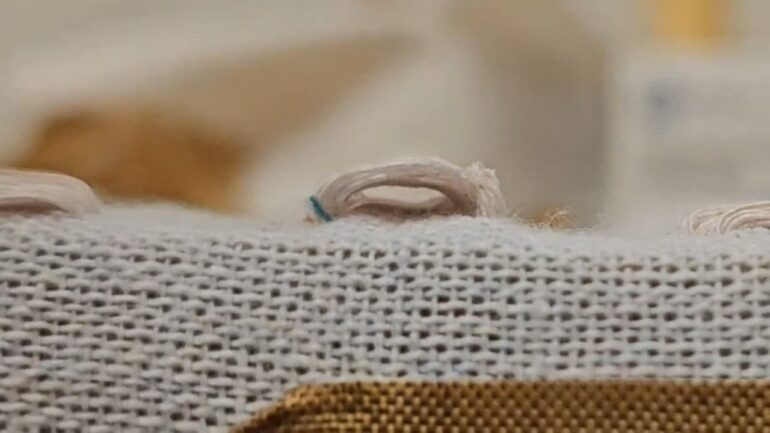- NC State University unveils innovative fabric-based touch sensor technology.
- Integration of 3D embroidery and machine learning enables seamless device control through touch.
- The sensor comprises an embroidered pressure sensor and microchip, harnessing triboelectricity for self-powering.
- The meticulous design addresses the challenges of achieving a triboelectric, three-dimensional structure.
- Machine learning algorithms enhance gesture recognition and filter unintended inputs.
- Demonstrated versatility includes music playback control, password input, and video game control.
- Challenges remain in adapting existing embroidery technologies to specialized materials.
Main AI News:
NC State University has unveiled a groundbreaking advancement in wearable technology, merging three-dimensional embroidery techniques with cutting-edge machine learning. The result? A fabric-based sensor poised to revolutionize how we interact with electronic devices through touch.
In an era where wearable electronics are rapidly evolving and integrating into our daily lives, the development of an embroidery-based sensor capable of seamlessly controlling these devices marks a significant breakthrough. Embedded within the fabric of clothing, this sensor empowers users to effortlessly activate and manage electronic devices, including mobile applications, through simple touch gestures.
Comprising two essential components—a meticulously crafted embroidered pressure sensor and an advanced microchip—the technology harnesses the principle of triboelectricity. This self-powering mechanism derives energy from the friction generated between its layers, consisting of yarns infused with both positive and negative triboelectric materials. Leveraging conventional textile fabrication processes aided by embroidery machines, these materials seamlessly integrate into the fabric substrate.
Rong Yin, the study’s corresponding author, emphasizes the critical role of the sensor’s three-dimensional structure. “Achieving the ideal pressure sensor required meticulous design considerations,” Yin explains. “The triboelectric nature demanded precise layering with a controlled gap—an intricate challenge within the realm of embroidery, traditionally confined to two-dimensional designs. By incorporating a spacer, we achieved the necessary gap control, optimizing the sensor’s performance.”
The pressure sensor’s data is then relayed to the microchip, where it undergoes processing to execute specific commands for connected devices. Central to this seamless operation are sophisticated machine learning algorithms. Yin underscores the significance of these algorithms in discerning between various touch gestures and filtering out unintended inputs arising from the fabric’s natural movements.
“Machine learning plays a pivotal role in enhancing the device’s functionality,” Yin notes. “It enables the sensor to differentiate between intentional gestures, ensuring precise control over connected devices. Additionally, its adaptability allows for diverse functionalities, expanding the device’s utility.”
The technology’s versatility was demonstrated through the development of a music playback application, seamlessly integrated with the sensor via Bluetooth connectivity. Six distinct functions—play/pause, skip forward, skip backward, volume up, volume down, and mute—were meticulously mapped to corresponding gestures on the sensor. Beyond music control, researchers showcased its potential in tasks ranging from password input to video game control.
Despite its nascent stage, Yin acknowledges the challenges posed by existing embroidery technologies’ limitations in handling specialized materials. Nevertheless, the sensor represents a significant stride in the ongoing evolution of wearable electronics, promising broader applications and heightened user engagement in the foreseeable future.
Conclusion:
The introduction of NC State University’s fabric-based touch sensor heralds a new era in wearable technology. By seamlessly integrating embroidery techniques with advanced machine learning, the sensor empowers users to control electronic devices through intuitive touch gestures. This innovation not only enhances user experience but also opens doors to diverse applications, promising significant market potential in the evolving landscape of wearable electronics. As the technology matures and overcomes existing challenges, it is poised to drive considerable consumer interest and industry growth.

